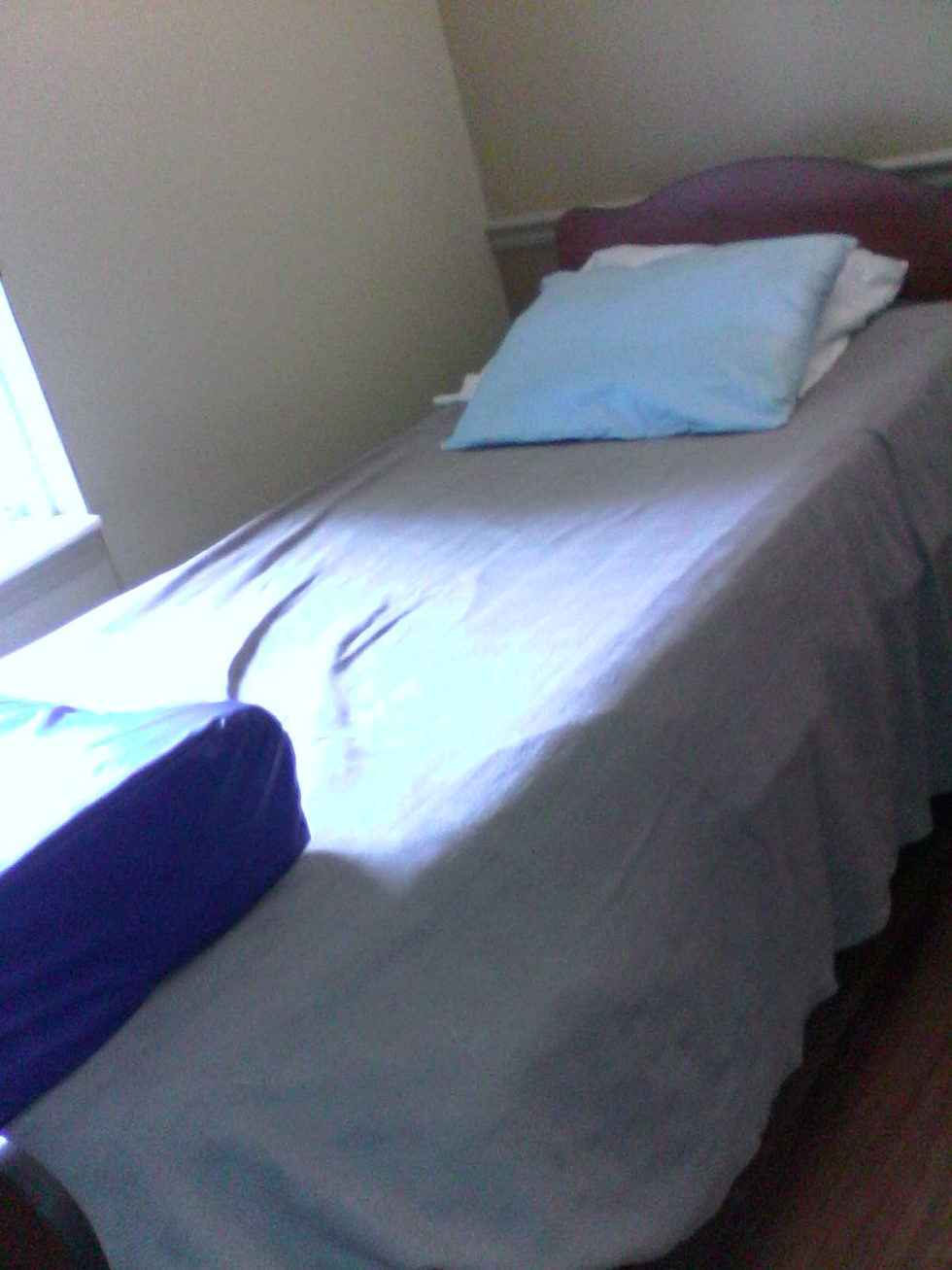Last week I celebrated my 56th birthday. Instead of venturing into the cold waters off Oregon’s Pacific Coast as I did with my eldest son the previous year, I picked up a copy Daniel Duane’s autobiographical work, Caught Inside “A Surfer’s Year on the California Coast.” This book has been an unexpected pleasure with a good bit of nostalgia.

I grew up in Northern California. More specifically, I spent my youth living in the San Francisco Bay Area. As soon as I was old enough to drive, I bought the cheapest most reliable vehicle I could get my hands on.
My ’64 Cadillac Fleetwood was equipped with 8 electric windows and a 4 way electric front bench seat with folding armrest. I paid $300 for the luxury of putting gas in it (it got 11 miles/gallon on a good day), but it had really good tires. The interior of my land yacht was long enough and wide enough so that I could cruise to and from the beaches of coast highway 1 with three of my friends while stacking all four 7 foot+ single fin big wave boards between us (yep, they fit inside with room to spare – never had to worry about surf racks getting stollen off or pried from the roof gutters).
By the time I was 17, all the money I saved doing odd jobs went to pay for gas and bridge fare so that I could hit the waves on weekends. Surfing the central coast of California during most seasons means getting up well before dawn. The good thing was the lack of traffic on the roads in the wee hours on a weekend. Why so early? Because the the wind doesn’t pick up until about an hour and a half after sunrise. When it does, it usually comes in from the West and blows the tops of the waves on to themselves, destroying their shape, and making them unridable.
In Duane’s memoir, Caught Inside, the explanation of weather influence on surfing he presents is accurate and complete, as was nearly every passage in this remarkable work. Duane adds an artistic if not poetic variation to all things related to surfing. In the case of blown out surf in California, the West/North Westerly winds are generally a result of solar heating of the land inland causing the air to rise. The more dense and colder moisture laden air over the Pacific rushes in to the area of lower pressure creating strong sea breezes. The hotter it gets inland, the stronger the wind – not always, but that is generally the case.
During the winter months, two things happen that are favorable for surf seekers on the central coast. As a result of storms in the North Pacific, North/Northwest ground swells tend to be frequent and big (anywhere from 8 – 15 feet). As a result of longer nights and the cold ambient air over land, when the wind does come up, it tends to blow off-shore, standing up the wave faces, blowing the tops over the backs of the waves, and slightly delaying the wave from breaking as it moves towards the shallows.
In the opening passage of Duane’s book, is a vivid description of what it is like for a surfer on the verge of drowning in big surf. I don’t know what his excuse was or even if he had one, but he does a great job of writing about the dangerous situation he found himself in. Regardless, it brought back a vivid memory of my own and one that I’ll never forget.
At age 17, young men want to be tested and as a result of inexperience, begin to act as if they are bullet proof and invincible. At least that is the excuse I’ll use to disguise my stupidity for nearly drowning at San Francisco’s Ocean Beach one January morning in 1977. When I arrived at the end of Noriega Street, the sun had just shown itself peeking out over the pines of Golden Gate Park. The effect made the wave faces take on a golden glow. The offshore wind hadn’t begun to blow as I donned my 3.5 mm wetsuit (not nearly warm enough for the conditions). I slid the 7’2″ pintail out from where it rested over the seat backs of the Caddi, and made my way across the Great Highway, over the sand to the water’s edge. I could see there were three others, way outside, 20 yards or so beyond the shore break. Though I came to ride alone (dumb idea), I was not alone, which made the whole adventure seem a lot less scary.
Before paddling out, I watched the waves and looked for a channel or rip to navigate out to the lineup. The waves looked like they might have been 8 feet from base to lip. They were breaking top to bottom – the lip threw way out into the flat water, indicating the sandbar they were breaking over was shallow. What I didn’t have the experience to realize was that they seemed to break in slow motion, which I later discovered was a function of being super big and therefore the water had a long way to travel before cascading forward as a wall of white foam.
As I paddled out, I saw one of the others drop into the first wave of an incoming set. He took the right of the large two way peak, favoring the shoulder and maneuvered in my direction. I looked over my shoulder for him as he and the wave passed and I crested the top. It seemed like a long time before the remainder of the wave broke in a long section closer in toward the shore break. Just as I made it out to the lineup, the other two surfers took off on the same wave, one went left and the other took the right just as the previous guy did.
I was alone in the lineup with my thoughts, mostly about how much bigger the surf was than I thought it would be. At some point while paddling out, I considered myself pretty lucky to have made it through the soupy shore break without much difficulty. Once I was in that middle ground between shore break and where the sets were breaking on the outer bar, it became a race to get outside and stay in the channel before another set came through. That is what getting caught inside is all about. It is all about being in the wrong place at the wrong time, possibly in a position to have a monster wave crash right on top of you, or worse, when you’re just about to scratch over the top of the feathering lip and suddenly discover you’re unable to make it before it breaks. That is when you get sucked over the falls and Maytagged in a mass of swirling white and held down on the bottom in the dark cold, running out of breath. If you’re lucky enough, you surface in time to take a gulp of air before the next wave holds you down again.
At Ocean Beach in big winter conditions, it is a dangerous ordeal to swim in for those reasons above. The only safe alternative is to choose a wave and surf it to shore. Hardcore big wave riders will do that, and when they discover the wave just ridden wasn’t so bad, they’ll turn around and go out for more. It is that first wave in big surf that carries the most weight.
In the situation I found myself in that day, I saw a set coming in and maneuvered to be in the safest possible position so I could take off to the right and favor the shoulder like the other guy did when I was paddling out. What I didn’t calculate was the speed of the waves. I was too far inside, but made it over the first wave of the set and scratched to get over the second. My heart was racing and the adrenalin was pumping.
It felt like I was in the perfect position for the third wave, so I turned and paddled for it. I was committed – deeply committed and was poised for a late take off, later than any I’d ever made. I managed to get to my feet but could feel my speed wasn’t quite happening. About a third of the way down, the wave began to pitch. I looked to my right and saw two guys paddling back out. One of them screamed something that sounded like “YOU’RE CRAZY DUDE – GONNA EAT IT.” My speed was still lacking and in an instant I could feel I was getting sucked up and beyond vertical, so I bailed at the last second – too late. I don’t know how, but instinct allowed me to draw the breath I’d need to survive what happened next.
Attached to the surface tension of the moving water of the waves lip, I had a sense of being suspended in the air on the roof of the wave’s tube with no awareness of where my board might be. I was on my way over the falls on the inside of the tube heading for the sandy bottom. As the wave crashed with me on the inside of it, somewhere in all the chaos, I felt my left knee contact something hard – it was my board, but only for an instant, then I was in a swirling tumble. My worst night mare! Cold dark and disoriented by the power and motion of all that moving water, I tried to relax and not fight it, even though every instinct told me to swim for the surface.
At some point, I felt the wave finally release me, just enough that I could swim to the surface. I’d made it, but not in time to climb on my board. I knew it was attached to my ankle by the stretchy cord anchored to my board. I felt it tugging on me as I swam down to avoid the worst of the next wave that followed. It took me quite a while to make it to the beach. I was exhausted and threw up in the sand having ingested so much sea water. I peeled the velcro strap from my ankle and noticed the elastic surf leash was twice as long as it was before I paddled out. I also saw the huge fractured dent in my board where my left knee made contact with it. I wasn’t sure it would be worth repairing it was so big and mangled – right in the center of the bottom where the fractured fiberglass and redwood stringer peeled back from the foam.
I didn’t quit surfing that day. In fact, I spent the next three years making it the most important activity in my life. Duane’s book Caught Inside: A Surfer’s Year on the California Coast conjured the memory shared above along with many others that have me contemplating my return to playing at the worlds greatest outdoor activity – surfing. If I do return, it will be in warm water.
Read Gregory S. Lamb’s review of Daniel Duane’s Caught Inside on his personal blog.



